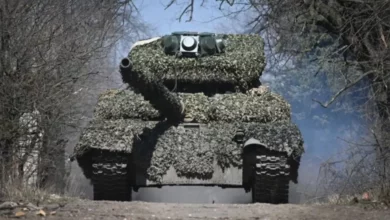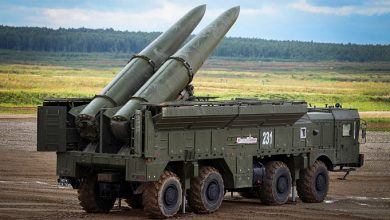Archeologists just unearthed a live artillery shell from the 1860’s

The round may have failed to detonate, but it’s probably still dangerous.
It was fired from a so-called “Parrott gun,” a popular artillery type during the war.
A dig at a Civil War (1861-1865) battle site turned dangerous this month when researchers unearthed a live artillery shell. Archeologists at the Kennesaw Mountain National Battlefield in Georgia say the shell came from a “Parrott gun,” a type of artillery that was popular among both Union and Confederate armies.
Southeast Archaeological Center discovered the shell and announced the find on its Facebook page on March 3. From there, the Center notified the nearby Cobb Police Department, which sent two Bomb Squad members out to examine it. The squad identified the shell as belonging to a Parrott rifle and promptly moved it to an explosives holding bunker pending disposal.
Parrott rifles were a type of field artillery built in large numbers during the Civil War. They were built in a range of sizes, from rifles with a 2.9-inch diameter all the way up to ten inches. The rifles were loaded from the muzzle and featured spiraling grooves inside the barrel. The grooves, also known as rifling, impart spin on a projectile, flattening its trajectory and making aimed fire more accurate. Rifling is still common on today’s artillery pieces, including the M777 howitzer, the main towed artillery piece of the U.S. Army.
The guns are commonly identified by the thick band of iron around the breech (base) of the gun. The band reinforces the barrel against the pressure built up by the burning powder charge, which sends the explosive projectile downrange.
The grooves on rifled barrels help projectiles to fly straighter, allowing gunners to predict their impact points. This is rifling on a machine gun barrel, circa 2007.
The Cobb Police Department provided a photo (at the top of this story) that shows just how dangerous the shell really is. The police flashlight in the photo has a one-inch diameter, and the shell appears to be approximately three inches wide. That corresponds to a 76-millimeter Parrott rifle, which fired a ten-pound projectile. Approximately one pound of the projectile is an explosive charge, the rest is a metal casing designed to fragment and send shrapnel flying. Parrott guns were used during battles and sieges of forts and cities.
Robert Parrott designed the guns as an inexpensive means of building up artillery units during the Civil War. They featured cast-iron tapered barrels with muzzles thinner than the breech in order to save weight. Unfortunately, the use of cast iron instead of stronger forged iron caused Parrott gun muzzles to occasionally explode, leading artillerists to mistrust the gun.
Unexploded ordnance is occasionally found on former battlefields worldwide, though mostly at former 20th-century battle sites. Explosives dating back to the 19th century are relatively rare, as the iron tends to corrode—though in 2021, a metal detecting enthusiast discovered a live explosive cannonball near the Monocacy National Battlefield in Frederick, Maryland.
Source: Popular Mechanics





